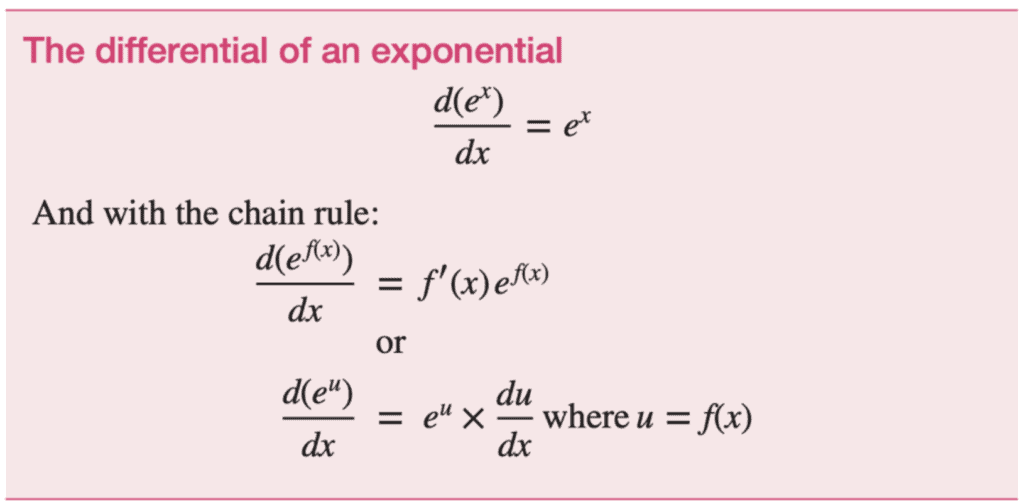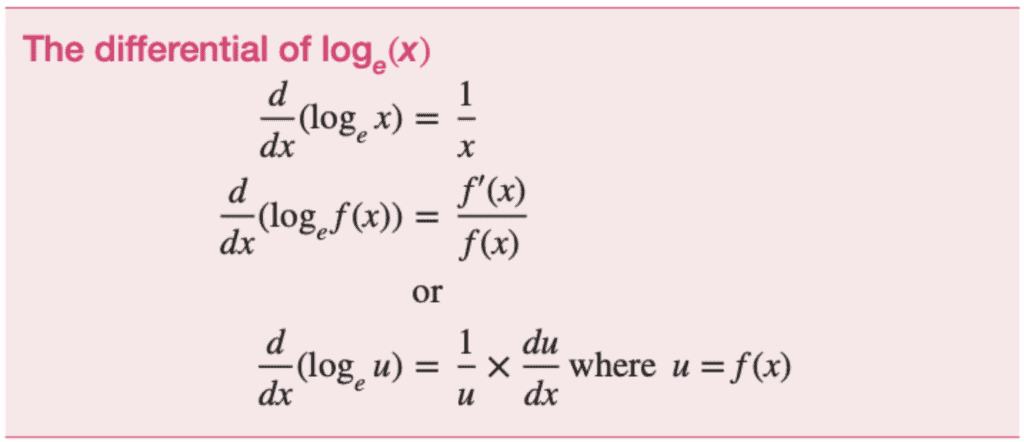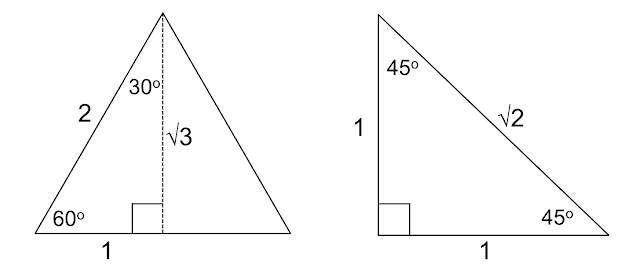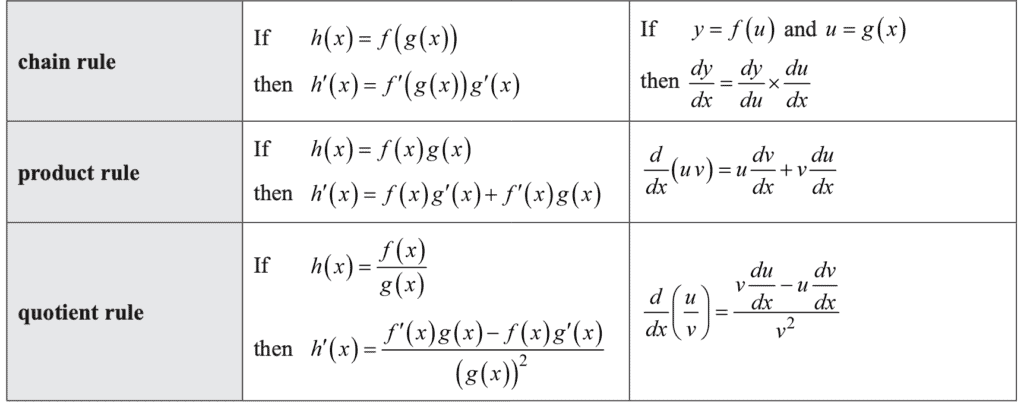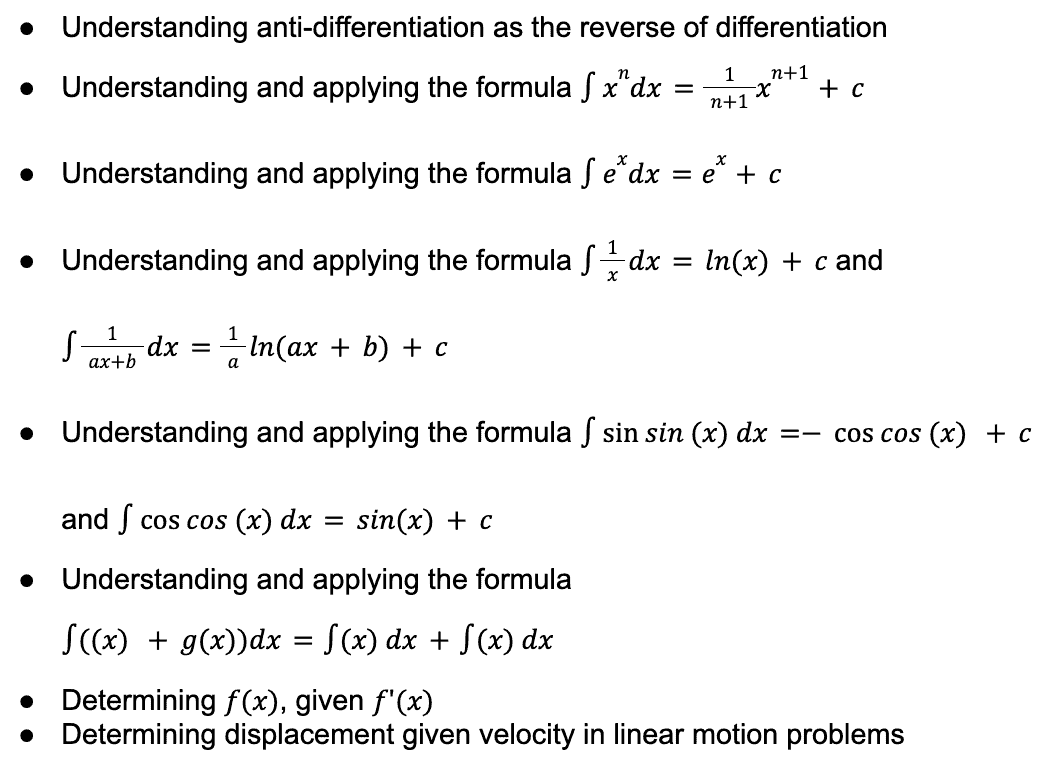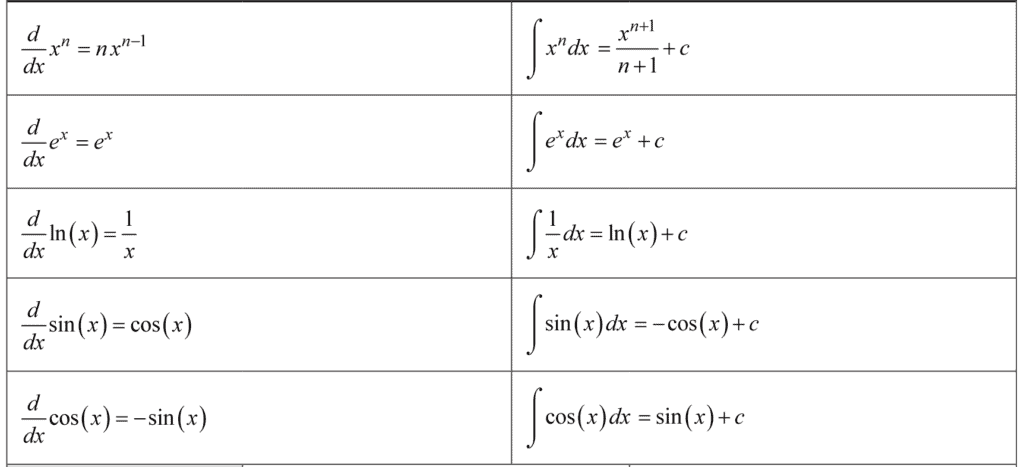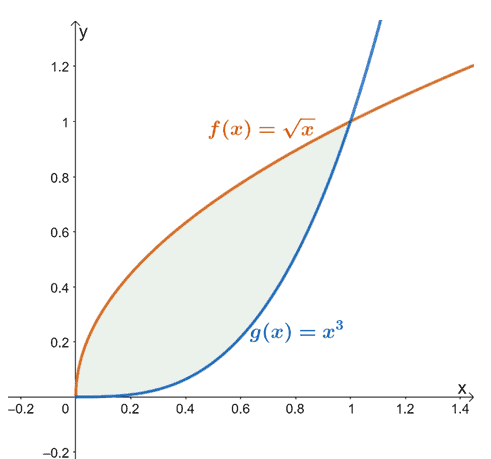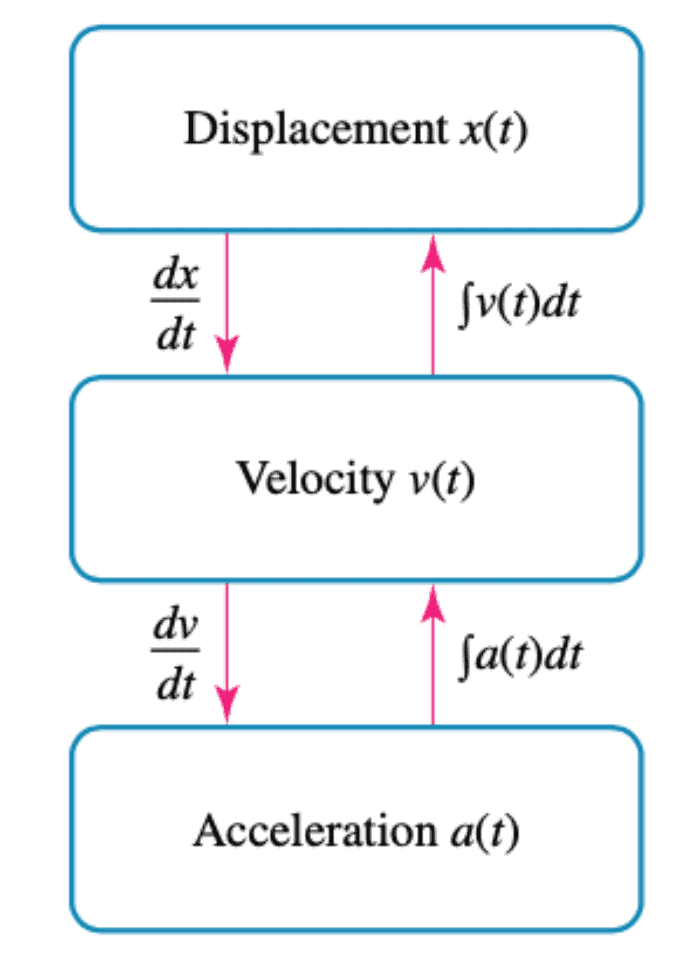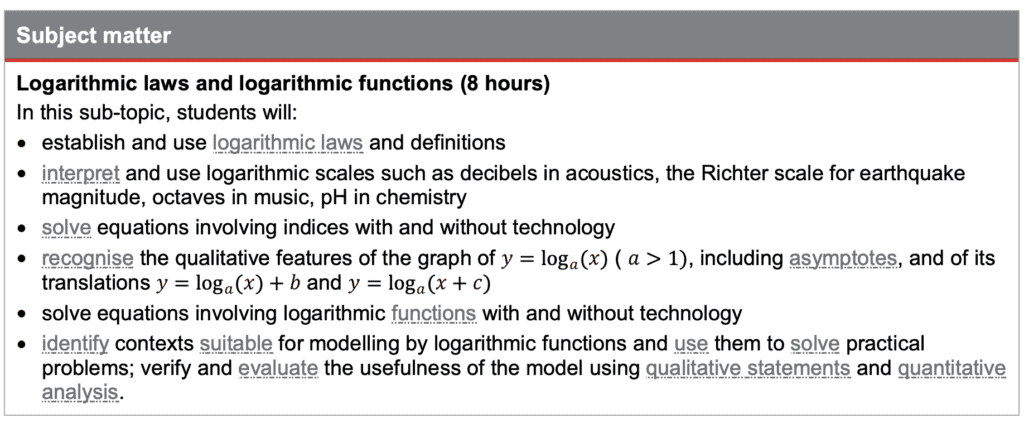Begun working on Unit 3 of QCAA Maths Methods but aren’t sure what you’ll be covering? We’ve come up with a handy guide for you!
To simplify your learning, we’ve identified the key things you’ll be learning in each of the topics for Unit 3 of QCAA Maths Methods and the assessments you’ll have.
Ready to get started? Let’s go!
What is Unit 3 in QCAA Maths Methods all about?
Topic 1: The Logarithmic Function 2
Topic 2: Further Differentiation and Applications 2
Topic 3: Integrals
QCAA Maths Methods Unit 3 Assessments
Study Tips
What is Unit 3 in QCAA Maths Methods all about?
Unit 3 is the first of your two formative senior units for Mathematical Methods. This means that the assessments you do for this unit (IA1, 1A2 and EA) will count towards your ATAR. If that fact makes you worry, here’s how to make sure you’re in the right level for QCAA Maths or if you need to drop!
The unit is split into three topics:
- The Logarithmic Function 2
- Further Differentiation and Applications 2
- Integrals
These topics cover a variety of content which involve building on previous topics as well as learning entirely new concepts.
Topic 1
Topic 1 builds on your knowledge and application of logarithmic laws and indices laws, as well as your ability to interpret logarithmic scales. It also covers graphing logarithmic functions and understanding their features.
Developing a deep understanding of how changing each of the features of the logarithmic function can produce its translations is definitely helpful. Use Desmos to play around with the different factors of the log function and explore what happens as you change them.
Topic 2
Topic 2 furthers your understanding of differentiation of exponential, logarithmic, and trigonometric functions through the application of a number of formulas to solve practical problems.
The key to this topic is understanding when and how to apply the appropriate formula to solve each problem. For this, it is important to be able to recall and apply each of the formulas quickly, which can best be achieved through good old practice.
Topic 3
Topic 3 consists of a new concept: anti-differentiation. As the name suggests, anti-differentiation is the opposite of differentiation.
This means being confident with differentiation will be super helpful to getting the hang of anti-differentiation.
Similar to differentiation, knowing the formulas is key, and again, practice is the best way to get there.
Topic 1: The Logarithmic Function 2
Logarithmic Laws and Logarithmic Functions
This subtopic covers:
- Understanding and effectively applying the logarithmic laws and indice laws
- Understanding and interpreting logarithmic scales such as decibels in acoustics and pH in chemistry
- Identifying contexts suitable for modelling by logarithmic functions
- Understanding the qualitative features of the graph y = loga(x) (a > 1) and of its translations y = loga(x) + b and y = loga(x + c)
Image sourced from OnlineMathLearning.com
Image sourced from Jacaranda Maths Quest Mathematical Methods 12 Units 3 & 4
Still unsure what the best ATAR school is to study Maths Methods? We’ve done the research for you!
Topic 2: Further Differentiation and Applications 2
Calculus of Exponential Functions
This subtopic covers:
- Estimating the limit of
using technology
- Understanding and applying the formula
and
- Identifying contexts suitable for modelling by logarithmic functions and their derivatives
Image sourced from Jacaranda Maths Quest Mathematical Methods 12 Units 3 & 4
Calculus of Logarithmic Functions
This subtopic covers:
- Understanding the natural logarithm ln ln (x) = x
- Understanding and utilising the inverse relationship of the functions:
and
- Using logarithmic functions and their derivatives to solve practical problems
Image sourced from Jacaranda Maths Quest Mathematical Methods 12 Units 3 & 4
Calculus of Trigonometric Functions
This subtopic covers:
- Understanding and applying the formulas
and
- Identifying contexts suitable for modelling by trigonometric functions and their derivatives
- Using trigonometric functions and their derivatives to solve practical problems
Image sourced from Jacaranda Maths Quest Mathematical Methods 12 Units 3 & 4
Image sourced from Educating MrMattock
Differentiation Rules
This subtopic covers:
- Appropriately utilising product rule, quotient rule, and chain rule to differentiate functions
Image sourced from Maths Methods Formula Book
Topic 3: Integrals
Anti-differentiation
This subtopic covers:
Image sourced from Maths Methods Formula Book
Fundamental Theorem of Calculus and Definite Integrals
This subtopic covers:
Image sourced from The Story of Mathematics
Applications of Integration
This subtopic covers:
- Calculating the area under a curve and the area between curves
- Calculating total change by integrating rate of change
- Calculating displacement given acceleration and initial values of displacement and velocity
Image sourced from Jacaranda Maths Quest Mathematical Methods 12 Units 3 & 4
Jump over to our Maths Methods Unit 4 Summary Guide when you’re done!
QCAA Maths Methods Unit 3 Assessments
#1: IA1 – Problem solving and modelling task (PSMT)
It will assess your ability to respond to a mathematical investigative scenario and constitutes 20% of your overall grade. For a guide on how to structure your PSMT, see How to Structure Your PSMT Report for QCAA Mathematical Methods
#2: IA2 – Internal examinations
It will assess your understanding and application of the concepts learnt in Unit 3. It constitutes 15% of your overall grade.
#3: EA – External assessment
It is an exam that consists of both Unit 3 and 4 content and constitutes 50% of your overall grade.
Tips for Study
#1: Manage your time well
The syllabus has a guide for how much time should be spent on each subtopic.
Although this guide is technically for teachers and their lesson planning, you as a student can also use it to help guide your study (i.e. to figure out what topics may be more important and therefore require more study time).
#2: Understand how formulas work
A deep understanding of how the different formulas function and how they can be applied is crucial to tackling complex familiar and complex unfamiliar questions.
With complex unfamiliar questions in particular, it may not immediately be evident which formulas/concepts should be applied. Therefore, having a strong understanding of each formula can help you determine the required approach for each question efficiently.
#3: Complete a range of practice question styles
If there’s a style of question you find yourself struggling with, then it’s the style of question you should be doing the most practice on.
#4: Become familiar with the formula booklet
Know what formulas are in it so that you don’t have to bother memorising them. Also, it can be helpful to have a general idea of where each group of formulae (i.e. trigonometric, logarithmic) is contained within the booklet so that you don’t waste time searching for them during exams.
Wondering how you measure up compared to your cohort? Give our QCE Cohort Comparison Tool a go to find out!
Also studying QCAA Physics Unit 3? Check out our Guide to Unit 3: Gravity and Electromagnetism here!
Are you looking for some extra help with revising QCAA Maths Methods Unit 3?
We have compiled all of the relevant articles for Term 1 of Year 12 – check them out here!
We have an incredible team of QLD Maths Methods tutors and mentors!
We can help you master the QCAA Maths Methods syllabus and ace your upcoming Maths Methods assessments with personalised lessons conducted one-on-one in your home or online!
We offer one-on-one tutoring support for Maths on the Gold Coast! Check us out to find your tutor today!
We’ve supported over 8,000 students over the last 11 years, and on average our students score mark improvements of over 20%!
To find out more and get started with an inspirational QLD tutor and mentor, get in touch today or give us a ring on 1300 267 888!
Yalindi Binduhewa is an Art of Smart tutor based in Queensland and was part of the very first cohort to go through the ATAR system, so she knows exactly how fun and enjoyable it can be. She is currently studying a Bachelor of Medical Imaging (Honours) at QUT and is loving it. When she’s not doing uni-related stuff or tutoring, she’s hanging out with her friends, rewatching a show for the 100th time, or trying out new crafty projects and discovering that she doesn’t have a talent for everything.

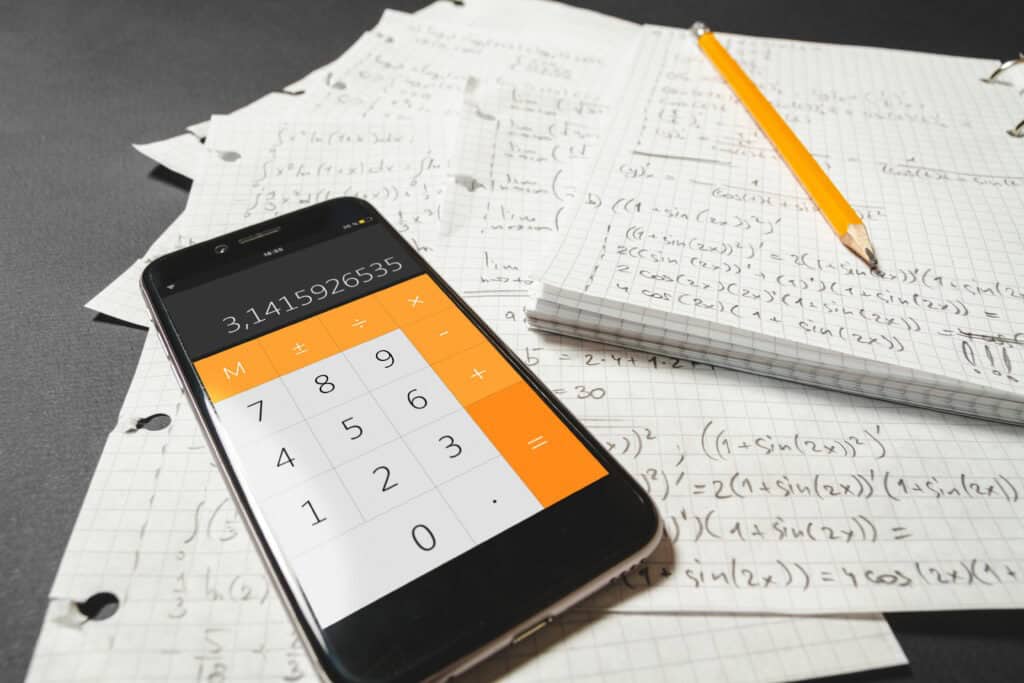
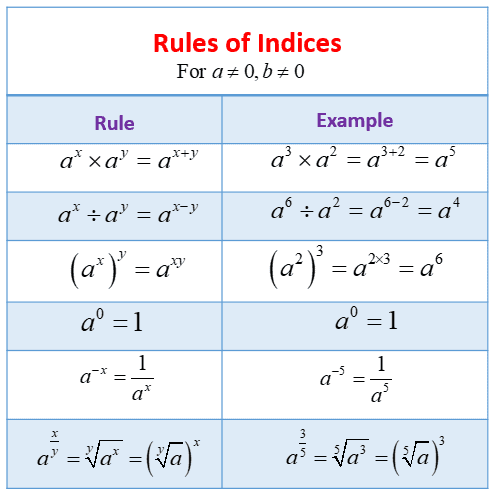


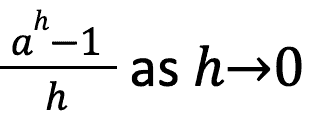
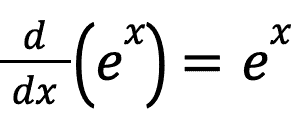 and
and